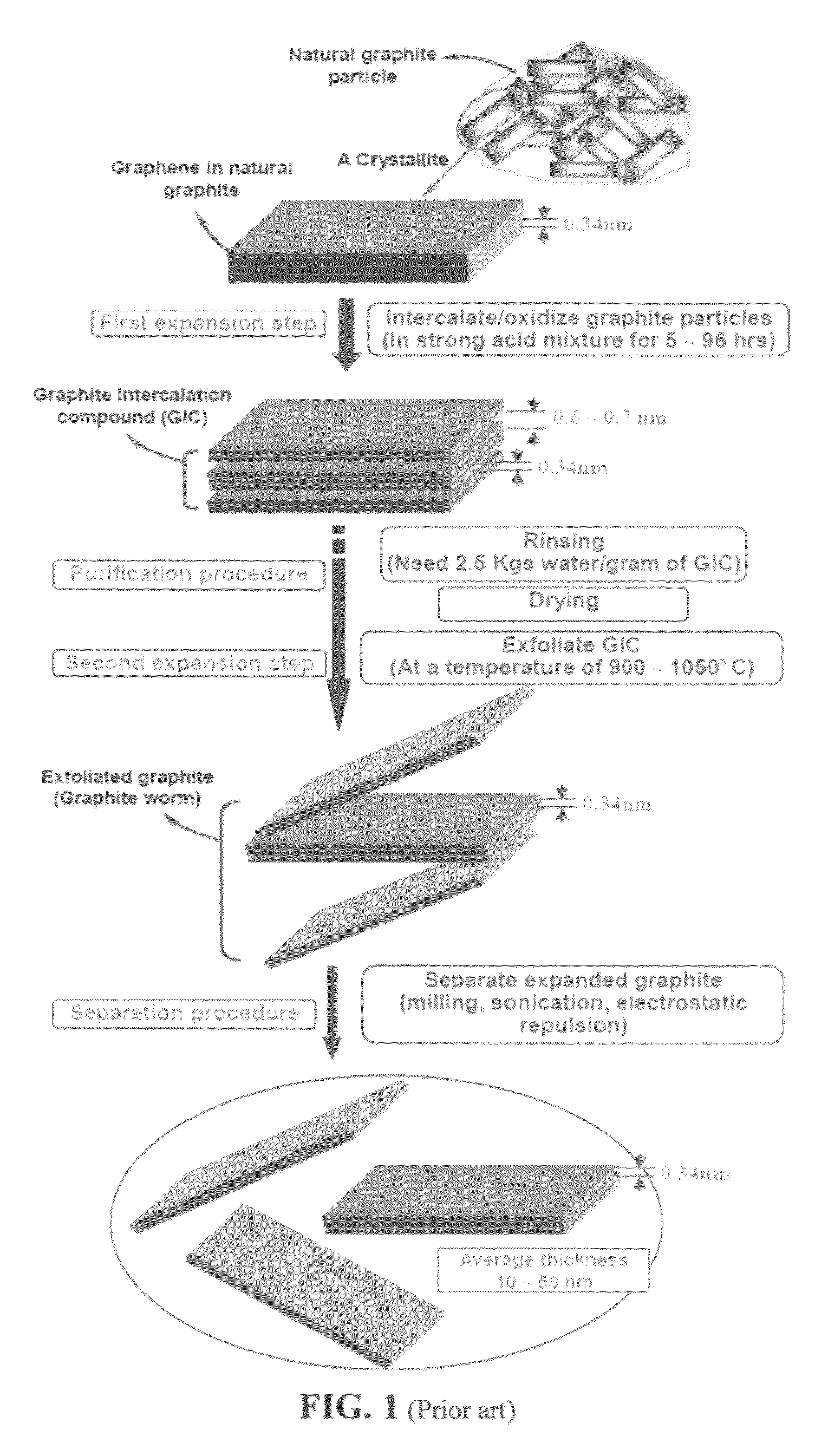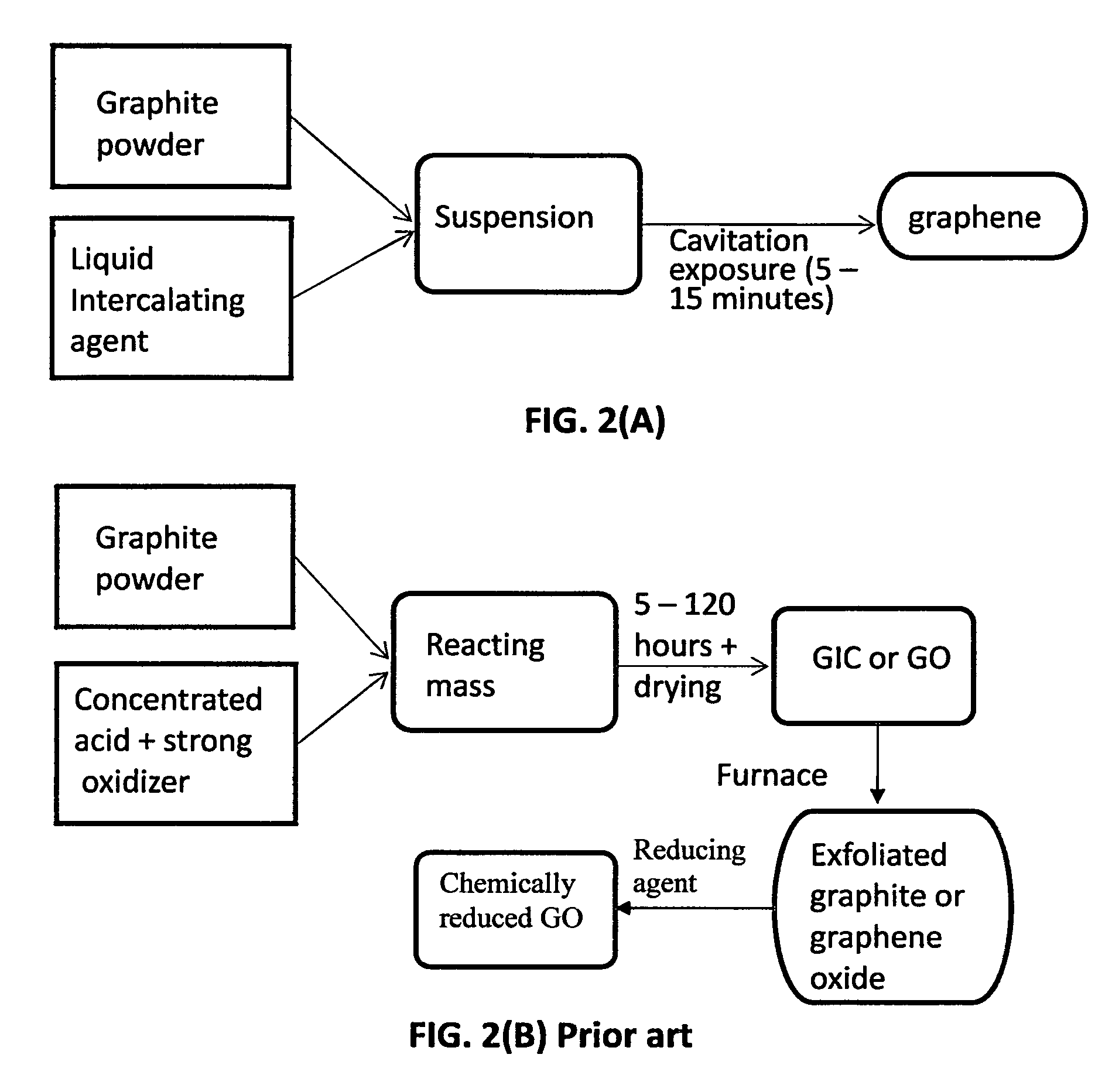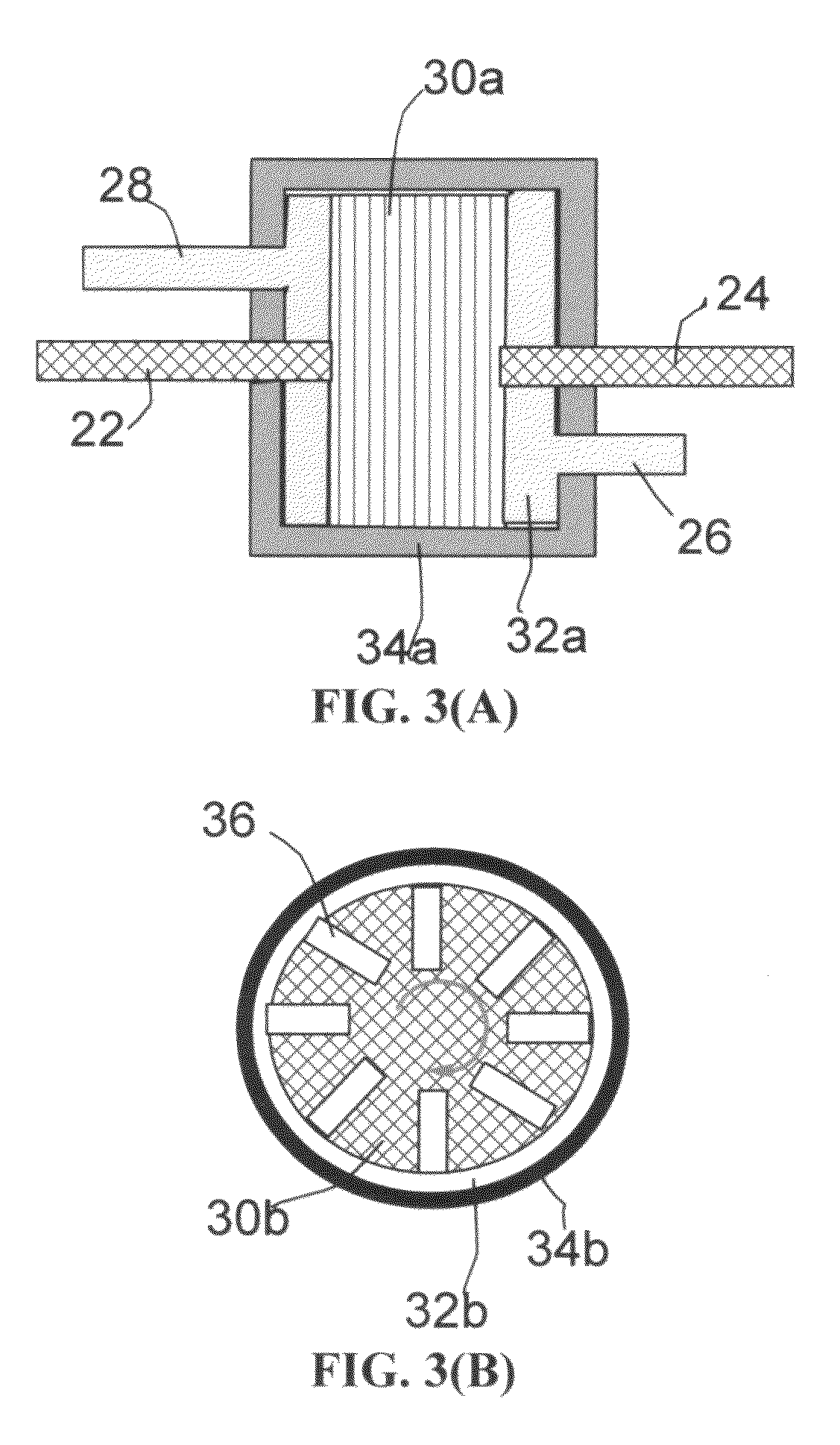Production of graphene materials in a cavitating fluid
a technology of graphene and cavitation fluid, which is applied in the direction of ether/acetal/ketal group formation/introduction, organic chemistry, chemistry apparatus and processes, etc., can solve the problems of high energy consumption of process, inability to produce ngps in mass, and both heat- and solution-induced exfoliation approaches require a very tedious washing and purification step
- Summary
- Abstract
- Description
- Claims
- Application Information
AI Technical Summary
Benefits of technology
Problems solved by technology
Method used
Image
Examples
example 1
Production of Graphene Sheets (NGPs) from Pristine Natural Graphite
[0109]Five grams of natural graphite flakes, ground to approximately 20 μm or less in sizes, were dispersed in 1,000 mL of deionized water (containing 0.1% by weight of a dispersing agent or surfactant, Zonyl® FSO from DuPont) to obtain a suspension. A laboratory-scale hydrodynamic cavitation reactor was operated to induce cavitation in water for 5 minutes to 1 hour (Sample 1C-s, 1 hour). For comparison purpose, an ultrasonic wave generator with an energy level of 85 W (Branson S450 Ultrasonicator) was operated for exfoliation, separation, and size reduction of graphene sheets for a period of 1 hour (Sample 1U-s).
[0110]Other preferred surfactants that can be used in a cavitation reaction include: anionic surfactants, nonionic surfactants, cationic surfactants, amphoteric surfactants, silicone surfactants, fluoro-surfactants, polymeric surfactants, sodium hexametaphosphate, sodium lignosulphonate, poly(sodium 4-styren...
example 2
Production of NGPs from Natural Graphite Flakes (No Surfactant)
[0111]Five grams of natural graphite flakes (same as in Example 1), ground to approximately 20 μm or less in sizes, were dispersed in 1,000 mL of deionized water to obtain a suspension. The same cavitation reactor was operated to induce cavitation in water for 5 minutes to 1 hour (Sample 2C-ns, 1 hour). The same ultrasonic wave generator at an energy level of 85 W (Branson S450 Ultrasonicator) was used for exfoliation, separation, and size reduction of graphene sheets for a period of 1 hour (Sample 2U-ns).
example 3
Exfoliation and Separation of Graphite Oxide to Produce Graphene Oxide Sheets
[0112]Graphite oxide was prepared by oxidation of graphite flakes with sulfuric acid, nitrate, and potassium permanganate according to the method of Hummers [U.S. Pat. No. 2,798,878, Jul. 9, 1957] for 5 hours (Sample 3A) and 24 hours (Sample 3B). Upon completion of the reaction, the mixture for each sample was poured into deionized water and filtered. The graphite oxide was repeatedly washed in a 5% solution of HCl to remove most of the sulphate ions. The sample was then washed repeatedly with deionized water until the pH of the filtrate was neutral. The slurry was spray-dried and stored in a vacuum oven at 60° C. for 24 hours. The interlayer spacing of the resulting laminar graphite oxide was determined by the Debey-Scherrer X-ray technique to be approximately 0.73 nm (7.3 Å). The two samples were then subjected to various combinations of thermal exfoliation, hydrodynamic cavitation, and ultrasonication tr...
PUM
| Property | Measurement | Unit |
|---|---|---|
| temperature | aaaaa | aaaaa |
| melting temperature | aaaaa | aaaaa |
| temperature | aaaaa | aaaaa |
Abstract
Description
Claims
Application Information
 Login to View More
Login to View More - R&D
- Intellectual Property
- Life Sciences
- Materials
- Tech Scout
- Unparalleled Data Quality
- Higher Quality Content
- 60% Fewer Hallucinations
Browse by: Latest US Patents, China's latest patents, Technical Efficacy Thesaurus, Application Domain, Technology Topic, Popular Technical Reports.
© 2025 PatSnap. All rights reserved.Legal|Privacy policy|Modern Slavery Act Transparency Statement|Sitemap|About US| Contact US: help@patsnap.com



